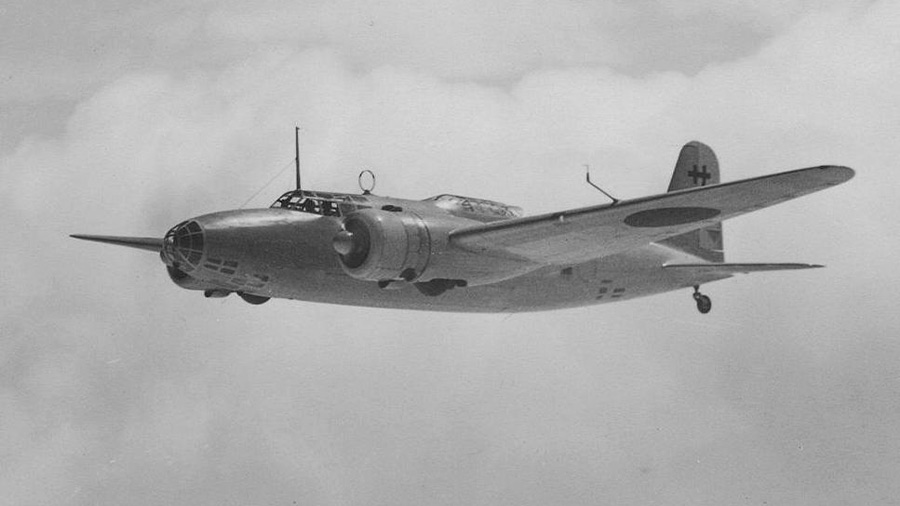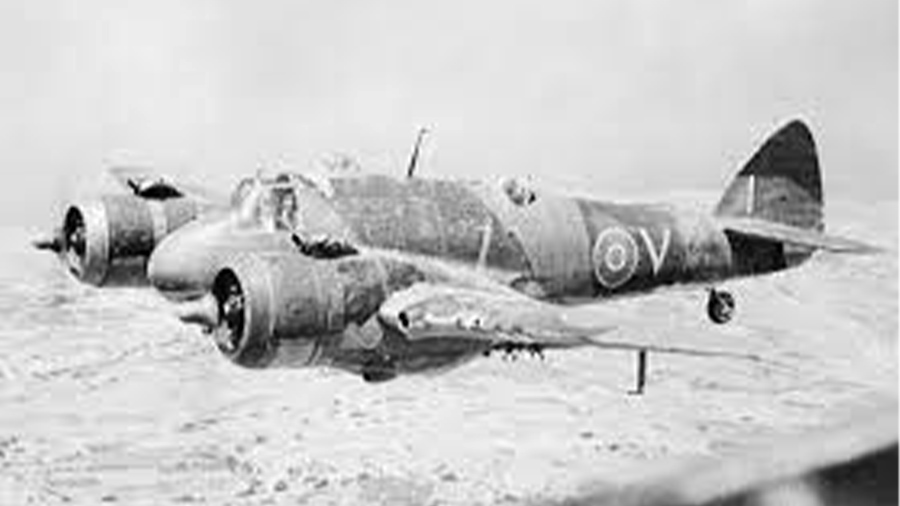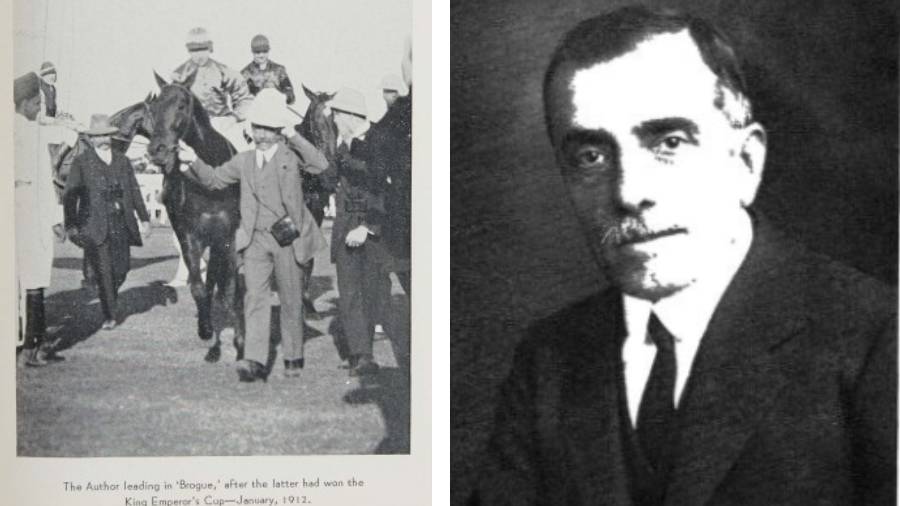The night of December 20, 1942. The city was in the midst of the Christmas cheer, Viceroy Linlithgow was gracing the city with his presence, and everyone was looking forward to the festivities ahead. But that night, all changed.
Eight KI-21 bombers from Imperial Japanese Army Air Force (IJAAF), codenamed ‘Sally’ by the Allies, raided Calcutta. Oil stores at Budge Budge bore brunt of the attack but Calcutta wasn’t entirely spared. According to some eyewitnesses, a massive hole was blown into the Maidan opposite the Grand Hotel. While there was no loss of life, the bombing landed a killer blow on the psyche of the city, prompting mass exodus upcountry.

Mitsubishi K21 - Sally Wikimedia Commons
The Jap Sallies returned for the next few nights and the raid on Christmas Eve saw bombs landing around Bentinck Street area causing some human casualties. The effect on the city's residents was catastrophic. More than a million people fled into the country (my maternal grandfather had moved his family to the safer environs of Faridpur in East Bengal). Contemporary eye witness accounts recall huge dumps of garbage in several parts of the city due to the majority of the corporation sweepers fleeing out of fear. The terror of the Japanese air raids led to the coining of the colloquial poem:
সা রে গা মা পাধানি
বোম ফেলেছে জাপানি
বোমের ভেতর কেউটে সাপ
সাহেব বলে বাপ্ রে বাপ্!
The British administration had been caught totally unawares. The focus of the war efforts was almost entirely towards the European/North African theatre and Japanese air raids over Calcutta / eastern India had not been foreseen. But now, after receiving a cold wake-up call, they swung into action with a number of temporary airfields coming up all over the city. Most memorable of these was bang in the middle of the city along Red Road. By the middle of January, Eight* Beaufighter night-fighters arrived in the city.

Hawker Hurricane Wikimedia Commons
On January 14, 1943, a new squadron, RAF No. 176 was raised with these. The motto chosen for the new formation was a very appropriate one: Nocte Custodimus – “We keep the night watch.” The squadron lead was a war veteran - Wing Cdr. Tony O’Neill who had shot down a Japanese bomber on the night of December 24 in his Hurricane. Also in the ranks was celebrated Australian fighter pilot Charles Crombie - who already had nine confirmed enemy ‘kills’. But the rising star of Squadron 176 was 21-year-old Arthur Maurice Pring - already credited with four confirmed and two probable kills in Egypt.
Just a day after 176 was raised, the Squadron was called into action as the Japanese bombers returned on the night of January 15. This time though, they were in for a surprise as a welcoming party awaited them. In a daring duel lasting just four minutes, Flying Sgt. Maurice Pring shot down three Japanese bombers near Khulna, 70 miles east of Calcutta.
The next day, the newspapers of Calcutta exploded! One of the headlines went, “Lend to be free. Be like Sergeant Pring, put all your efforts behind the fight against the enemy. Bravo Pring!” Others weren't far behind. Overnight, Maurice Pring became a celebrity in town. The RAF awarded him the Distinguished Flying Medal (DFM) and on January 21, he was commissioned as Pilot Officer (P/O) on promotion. Pring, along with Pilot Officer Harjinder Singh was also chosen to be the face of RAF recruitment adverts in India.
And accolades weren't only official. While looking to buy a .22 bore rifle for hunting in Calcutta, Pring was dejected to find the price of his desired choice out of bounds. A wealthy looking Indian gentleman now swung into the scene. He paid for the gun + 2000 rounds, then took Pring for a ride in his Rolls Royce and treated the latter to a sumptuous meal at Firpo’s! A few days after Pring’s heroics, Charles Crombie destroyed two Sallies over Budge Budge and heavily damaged another.

Beaufighter Wikimedia Commons
Reversals at the hands of the Allied pilots in Calcutta led to the Japanese suspending the raids for several months. The people who had fled the city in fear of the Japanese now started returning as peaceful days returned. In July 1943, Maurice Pring was promoted to Flying Officer (F/O). But peace was not long lasting.
On December 5, 1943, warnings came in of a massive combined air raid Japanese Army and Naval air forces. The Japanese forces this time adopted a different strategy – attacking in broad daylight in massive numbers. Pring was by this time flying a Hurricane – a lesser choice to take on the invaders as compared to the Spitfire. But 176 had no Spitfires. A little before 12, five Hurricanes, led by Flt. Lt. Brocklehurst took off from Baigachi air field (near present day Kalyani).
Shortly after, a stream of Japanese Zeroes# (fighters from the Naval air fleet) dived on Brocklehurst’s group from above and it was a massacre. Pring and two others: Flt. Lt. Halbeard and P/O Whyte were shot down. Of them, only Whyte successfully ejected. Brocklehurst’s plane was badly damaged but he managed to somehow fly back to Baigachi. Pring’s plane was last seen going down, engulfed in flames. Extensive air search could not locate any trace of Pring and Halbeard. Then on December 8, a foot-search party went out on the west bank of the Hooghly. Two days later, Maurice Pring’s badly burnt body was found amidst tall grass. No trace was ever found of Halbeard and his plane.
On Sunday, December 12, a city was in mourning as F/O Maurice Pring’s mortal remains were buried at the Bhowanipore Cemetery. The whole of Calcutta grieved – most of all the young boys and girls to whom Pring had emerged as an idol.
*Five according to some sources
# The Zero – make Mitsubishi A6M – was one of the main aircraft employed in the attack on Pearl Harbour
Source acknowledgement: https://www.rafcommands.com/india/in-the-skies-of-calcutta-a-tribute-to-maurice-pring/


